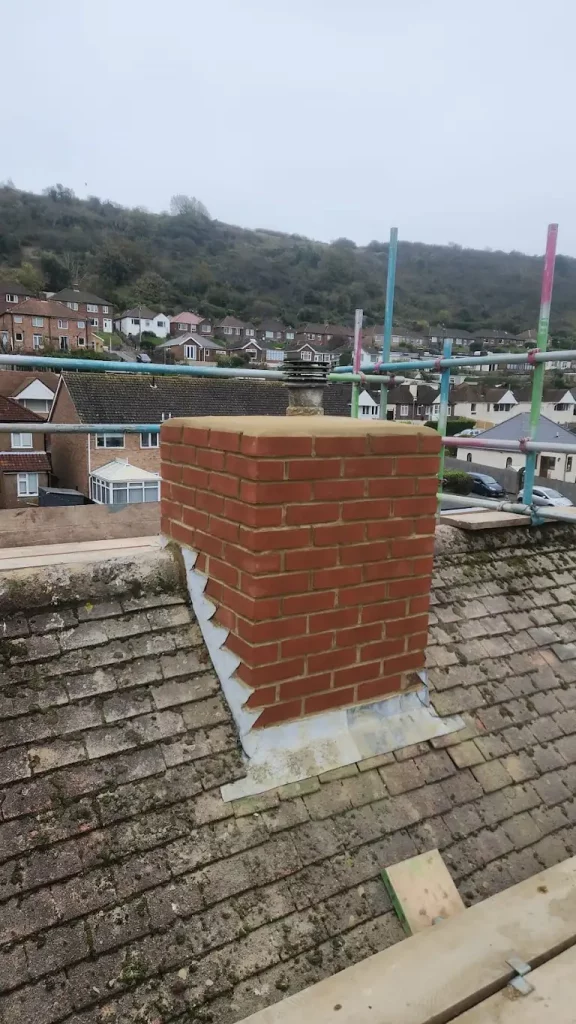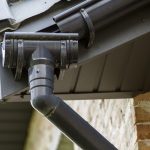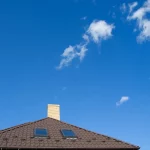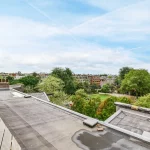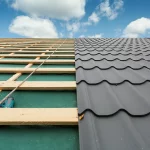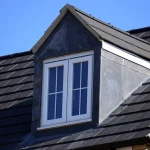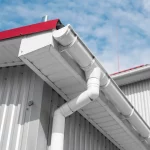Understanding the Basics of Chimney Structure
The typical chimney structure is a fundamental aspect of any home, providing an essential outlet for smoke and harmful gases produced by a fire. A functional chimney consists of several parts, including the flue, firebox, damper, and crown. The flue is a duct that allows smoke to exit, while the firebox is where fuel is burned. The damper controls the airflow, and the crown prevents water from entering the chimney. Understanding these components is crucial as it allows homeowners to identify potential problems and resolve them promptly.
A well-structured and maintained chimney enhances the safety and comfort of a home. A faulty or poorly maintained chimney can cause a host of problems, from inefficient heating to potential fire hazards. Thus, understanding and maintaining the chimney structure becomes incredibly important. In addition, a well-kept chimney increases the aesthetic appeal of a home, boosting its overall value.
While chimneys may appear simple in their functioning, their complexity should not be underestimated. Each part of the chimney plays a critical role in ensuring efficient and safe operation. Regular inspection and maintenance are essential to preserve the structure’s integrity and prevent costly repairs or replacement in the future.
Common Chimney Issues in the Kent Region
In the Kent region, homeowners often face several common chimney issues. Water penetration is a frequent problem due to the region’s wet climate. This can lead to damp patches on the walls, rust, and structural damage, weakening the chimney over time. Another common issue is the presence of tar and creosote build-up. These substances are by-products of burning wood and can cause blocked flues and potential fire hazards if not cleaned regularly.
Chimney leaks are also common in Kent, often resulting from damaged or missing flashing. The flashing is the seal between the chimney and the roof, and when compromised, it can let in water, leading to potential damage to your home’s interior. Another issue often encountered in this region is damaged chimney crowns. The crown plays a critical role in protecting the chimney from the elements, and any damage can lead to water ingress and further deterioration.
Finally, chimney blockages are a common issue faced by homeowners in Kent. This can be due to accumulated debris, bird nests, or other obstructions, leading to inefficient fireplace operation and potential risks. Regular chimney sweeps and inspections can help prevent these problems and ensure the safe operation of your chimney.
Time to Call a Professional: Recognising Serious Damage
Recognising serious chimney damage early can save homeowners in Kent time and money, preventing minor problems from escalating into major concerns. Some signs of significant damage include crumbling bricks or mortar, noticeable white staining on the exterior (efflorescence), and a rusted damper or firebox. These indicate severe water damage, potential structural problems, and the need for immediate professional attention.
Another red flag is a smoky fireplace. If smoke is coming back into your home instead of going up the chimney, it could indicate a blockage or damage to the flue lining. Furthermore, an unusual or unpleasant smell coming from the fireplace can be a sign of creosote build-up, indicating the need for a thorough chimney cleaning.
Lastly, if you notice any changes in your chimney or fireplace’s performance or appearance, it’s time to call a professional. Regular inspections by a certified chimney sweep can help detect damage early, but homeowners should not hesitate to seek professional help at the first sign of any issue.
How Weather Conditions in Kent Affect Your Chimney
Kent’s weather conditions can significantly affect your chimney’s performance and lifespan. The region’s high rainfall can lead to water penetration, causing dampness, rust, and structural damage. Moreover, the freeze-thaw cycle during winter can cause further deterioration, as water trapped in the masonry expands and contracts, leading to cracks and potential collapse.
The region’s strong winds can also affect your chimney, causing wear and tear to the chimney cap and flashing. Not only can this lead to water damage, but it can also cause blockages from debris blown into the chimney. In addition, the salt air in many parts of Kent can be corrosive, leading to premature aging and deterioration of the chimney structure.
To combat these weather-related issues, regular chimney maintenance is crucial. This includes waterproofing, regular cleaning, and replacing worn or damaged parts as necessary. By taking these steps, homeowners in Kent can ensure their chimneys remain functional, safe, and long-lasting, despite challenging weather conditions.
Guide to Routine Chimney Maintenance
Routine chimney maintenance is essential to keep your chimney functioning well and to prevent costly repairs. The first step is regular cleaning. Burning wood creates creosote, which builds up over time and can cause blockages or even chimney fires. A professional chimney sweep can remove this buildup, ensuring your chimney functions optimally.
Keeping the chimney cap in good condition is also important. The cap prevents water, debris, and animals from entering the chimney. If damaged, it should be repaired or replaced promptly to prevent potential problems. Moreover, the chimney crown and flashing should be regularly checked for any damage and repaired as needed to prevent water ingress.
Lastly, scheduling annual chimney inspections is an essential aspect of routine maintenance. A professional can detect any issues early, preventing small problems from escalating into significant repairs. By following these maintenance steps, you can enjoy the benefits of a safe and efficient fireplace while prolonging the lifespan of your chimney.
Choosing the Right Chimney Repair Services in Kent
Finding the right chimney repair service in Kent can greatly influence the longevity and functionality of your chimney. When choosing a service, look for professionals who are certified, insured, and have good customer reviews. Certification from reputable organisations like the National Association of Chimney Sweeps (NACS) or the Guild of Master Chimney Sweeps is a good indicator of professional competence and adherence to safety standards.
Ensure that the service provider offers a comprehensive range of services, from routine chimney sweeping to repairing complex structural damage. A provider offering a full range of services can handle all your chimney needs, making them a convenient choice. Also, look for services offering a warranty or guarantee on their work, as this ensures they stand by their workmanship.
Lastly, consider the company’s customer service, as this can impact your overall experience. A company that provides clear communication, prompt response, and friendly service will make the repair process less stressful and more satisfying. By considering these factors, homeowners can find reliable chimney repair services in Kent that provide quality work and excellent customer service.
What to Expect from a Comprehensive Chimney Repair
A comprehensive chimney repair involves more than just fixing visible damage. It includes a thorough inspection of the entire chimney structure, identifying any potential problems, and implementing the necessary solutions. It may involve cleaning the flue, repairing or replacing the damper, fixing the crown or cap, and even rebuilding parts of the chimney if necessary.
During a comprehensive repair, any creosote build-up will be removed, and any blockages cleared. The chimney liner may be inspected for any signs of wear or damage and replaced if necessary. The chimney’s exterior may also be examined for evidence of water penetration or structural instability, and appropriate repairs or waterproofing measures taken.
By the end of a comprehensive chimney repair, homeowners can expect their chimney to be in excellent condition, safe for use, and efficient in its operation. Such a repair not only solves immediate problems but also prevents future issues by addressing any potential concerns, thereby saving homeowners future repair costs and ensuring peace of mind.
Preserving the Lifespan of Your Chimney in Kent
Preserving the lifespan of your chimney in Kent involves routine maintenance, timely repairs, and attention to the impact of weather conditions. Regular chimney sweeping is essential to remove creosote build-up and prevent chimney fires. Annual inspections by a certified professional can identify any damage or potential issues early, allowing for prompt repairs and preventing more extensive problems in the future.
Waterproofing your chimney is another crucial measure to preserve its lifespan, particularly in Kent’s rainy climate. A waterproofing sealant can prevent water penetration, thereby protecting the masonry from damage and prolonging the chimney’s lifespan. Additionally, regular checks and repairs of the chimney cap and flashing can prevent water and debris ingress, further extending your chimney’s life.
Lastly, understanding the impact of Kent’s weather and taking corrective measures can help protect your chimney. For example, in areas with corrosive salt air, using specific protective materials or coatings can help. By taking these steps, homeowners in Kent can ensure their chimneys remain functional and safe for many years, providing warmth and comfort to their homes.


